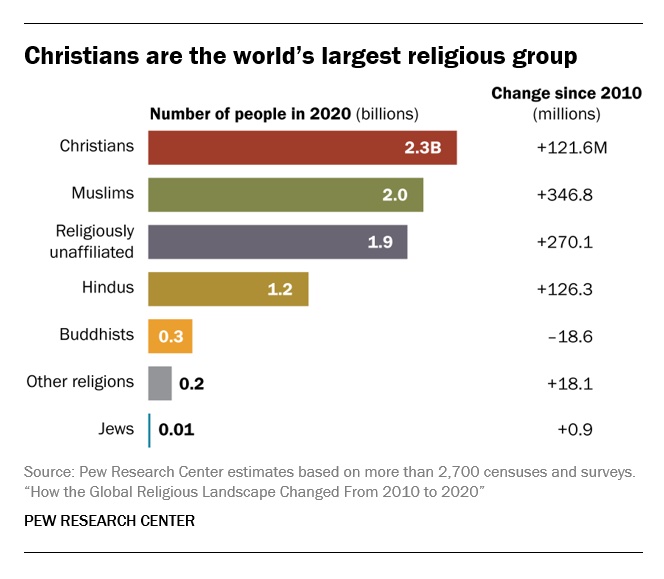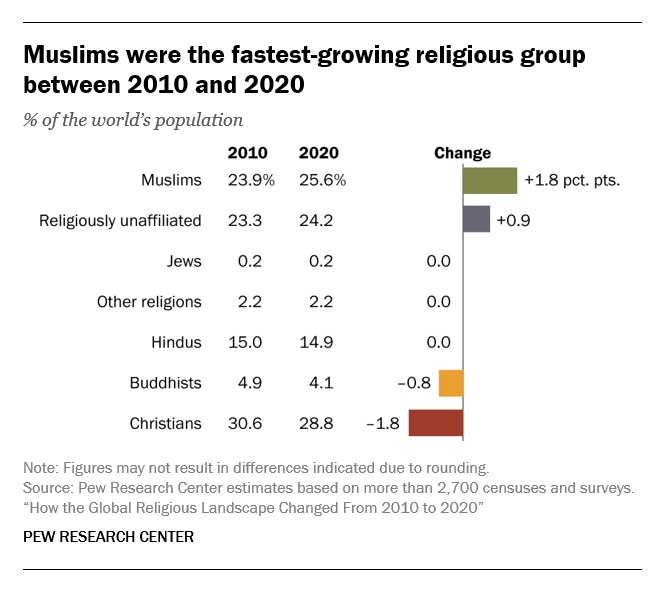Uncategorized
Hating Israel Isn’t New; How the CIA and State Department Undermined the Jewish State

“Teddy Roosevelt’s great-great-great grandson is an anti-Israel protester at Princeton,” blared a New York Post headline on May 4, 2024.
The Post reported that Quentin Colon Roosevelt, an 18-year-old freshman, and descendant of the 25th President, is an anti-Israel activist at the Ivy League university. But far from being hip and new, Quentin’s brand of anti-Zionism is old hat — he is merely continuing a long family tradition of anti-Israel activism.
There is an abundance of literature on Franklin D. Roosevelt’s views on Jews and Zionism, the belief in Jewish self-determination. Both FDR and his wife Eleanor had made antisemitic remarks. In a private conversation in 1938, then-President Roosevelt suggested that by dominating the economy in Poland, Jews were themselves fueling antisemitism. And in a 1941 Cabinet meeting, FDR remarked that there were too many Jewish Federal employees in Oregon. In his final days, FDR promised Saudi leader Abdul Aziz Ibn al Saud that he would oppose the creation of Jewish state in the Jewish people’s ancestral homeland.
FDR is the president who led the United States to victory against Adolf Hitler. He also employed Jews in high-ranking positions in his government. But he is also the president whose administration failed to save more Jews fleeing Nazism, and who refused to bomb the railway tracks leading to Auschwitz and other death camps where millions of Jews met a ghastly end. Accordingly, it makes sense that his beliefs regarding Jews have been the subject of books and belated study.
Less examined, however, is the Oyster Bay branch of the Roosevelt clan, and their beliefs regarding Zionism. In part, this is easily explained by the unique place that FDR holds in American history. He is the only president to serve four terms, and presided over both the Great Depression, World War II, and arguably the beginning of the Cold War. His branch of the family, the Hyde Park Roosevelts, were Democrats and remained active in public life for decades after his 1945 death.
At first glance, the Oyster Bay Roosevelts were more of a turn of the 19th century affair. They were Republicans, and their scion was Teddy Roosevelt, a war hero turned governor of New York state who, thanks to an assassin’s bullet, found himself as the nation’s leader in 1901.
The famously ebullient Roosevelt helped redefine the country’s idea of a president, and served as an inspiration for his cousin Franklin. But Teddy largely presided over an era of peace and tranquility, not war and upheaval.
Teddy was a philosemite. He was the first occupant of the Oval Office to appoint a Jewish American to the Cabinet. He championed the rights of Jews, both at home and abroad, and was harshly critical of the numerous pogroms that unfolded in czarist Russia.
As Seth Rogovoy has noted, Roosevelt’s “special relationship with Jews was forged during his time serving as police commissioner in New York City, a post he assumed in 1904.” When an antisemitic German preacher named Hermann Ahlwardt gave speeches in the city, Roosevelt assigned a contingent of Jewish police officers to guard the man.
Roosevelt was also a Zionist. In 1918, shortly after the Balfour Declaration, he wrote: “It seems to me that it is entirely proper to start a Zionist state around Jerusalem.” He told Lioubomir Michailovitch, the Serbian Minister to the United States, that “there can be no peace worth having … unless the Jews [are] given control of Palestine.” Six months later Roosevelt died in his sleep.
Not all his descendants would share his belief in Jewish self-determination, however.
Two of Teddy Roosevelt’s grandchildren, Kermit and Archie, served their country in the CIA during the early years of the Cold War. Both were keenly interested in Middle East affairs, and were fluent in Arabic. Both were well read and highly educated, authoring books and filing dispatches for newspapers like the Saturday Evening Post, among others.
They were also prominent anti-Zionists.
Kermit Roosevelt, known as “Kim,” played a key role in anti-Zionist efforts in the United States and abroad. He was not, by the standards of his time, an antisemite. But he was ardently opposed to the creation of Israel.
As Hugh Wilford observed in his 2013 book America’s Great Game: The CIA’s Secret Arabists and the Shaping of the Modern Middle East: “the anti-Zionism of the overt Cold War foreign policy establishment is well known” but “less widely appreciated is the opposition to Jewish statehood of the individuals responsible for setting up the United States’ covert apparatus in the Middle East.”
This began with the OSS, the CIA’s precursor. And it included men like Stephen Penrose, a former American University of Beirut instructor, and Kim Roosevelt’s boss during his wartime service in the OSS.
“Documents among Penrose’s personal papers reveal him engaged in a variety of anti-Zionist activities at the same time that he was commencing his official duties with the OSS,” Wilford notes.
Like many of his fellow Arabists, Penrose was the son of American missionaries who, failing to convert the native population to Christianity, sought to foster Arab nationalism instead. Penrose described himself as a “chief cook” who was “brewing” opposition to Zionism. He became one of Kim Roosevelt’s mentors.
In a January 1948 Middle East Journal article entitled, “Partition of Palestine: A Lesson in Pressure Politics,” Kim called the 1947 UN vote in favor of a Jewish state an “instructive and disturbing story.”
Roosevelt believed that the US media was unduly supportive of the creation of Israel, and claimed that almost all Americans “with diplomatic, educational, missionary, or business experience in the Middle East” opposed Zionism.
Kim’s pamphlet was reprinted by the Institute for Arab American Affairs, a New York-based group whose board he sat on. He also began working with the Arab League’s Washington, D.C., office and “turned elsewhere for allies in the anti-Zionist struggle, starting with the Protestant missionaries, educators, and aid workers.”
This nascent group soon received financial support from the American oil industry, which maintained close links to Kim’s OSS/CIA colleague, William Eddy.
As Wilford noted, the Arabian consortium ARAMCO “launched a public relations campaign intended to bring American opinion around to the Arab point of view.”
In addition to missionaries and big oil, Kim gained another important ally in the form of Elmer Berger, a rabbi from Flint, Michigan. Berger served as executive director of the American Council for Judaism, an anti-Zionist group that, among other things, opposed the creation of a Jewish army during World War II at the height of the Holocaust. Berger and Roosevelt became drinking buddies and close collaborators on their joint effort against the Jewish State.
Kim eventually became “organizing secretary” for a group called The Committee for Justice and Peace. The committee’s original chair, Virginia Gildersleeve, was both a longtime friend of the Roosevelts of Oyster Bay and the dean of New York City’s Barnard College, which today is part of Columbia.
Gildersleeve was “also a high-profile anti-Zionist” who “became involved with the Arab cause through her association with the Arabist philanthropist Charles Crane and the historian of Arab nationalism George Antonius.”
Crane, a wealthy and notorious antisemite, had lobbied against the creation of a Jewish state since the beginning of the 20th century, even advising then-President Woodrow Wilson against supporting the Balfour Declaration.
By 1950, the Committee had managed to recruit famed journalist Dorothy Thompson to their cause. Thompson was reportedly the basis for actress Katharine Hepburn’s character in the 1942 movie Woman of the Year. A convert to anti-Zionism, Thompson’s extensive network of reporters and celebrities proved crucial to Kim and Berger’s efforts to rally opposition to the Jewish State. In a 1951 letter to Barnard College’s Gildersleeve, Thompson wrote: “I am seriously concerned about the position of the Jews in the United States.” People, she claimed, “are beginning to ask themselves the question: who is really running America?”
Another ally emerged that year: the Central Intelligence Agency.
The CIA began funding the Committee, as well as its successor, the American Friends of the Middle East (AFME). Beginning in June 1950, Kim’s correspondence with Berger began making veiled references to the ACJ head taking on “official work” in Washington. This, Wilford believes, is a reference to working with the CIA. Indeed, the well-connected Kim and Archie Roosevelt had known top CIA officials like Allan Dulles since childhood.
With support from figures like Eddy, AFME also began encouraging Muslim-Christian alliances — ostensibly to counter Soviet influence, but also to attack the Jewish state. This led to some awkward alliances, including with Amin al-Husseini, the founding father of Palestinian nationalism and an infamous Nazi collaborator.
Husseini had ordered the murders of rival Palestinians, incited violence against Jews since the 1920s, and had led forces, equipped with Nazi-supplied arms, to destroy Israel at its rebirth in 1948. Now, along with the Secretary General of the Arab League, and Saudi King Ibn Saud, he was meeting with Eddy to discuss a “moral alliance” between Christians and Muslims to defeat communism. Kim himself knew Husseini, having interviewed him for the Saturday Evening Post after World War II.
AFME lobbied for the appointment of anti-Zionist diplomats and in favor of Eisenhower administration efforts to withhold aid from Israel. And both Berger and Thompson pushed for favorable coverage of the new Egyptian dictator, Gamal Nassar, who would wage war on the Jewish state for nearly two decades. Initially, they were successful, with TIME magazine writing that Nasser had the “lithe grace of a big, handsome, all-American quarterback.” Of course, there was nothing “all-American” about Nasser, who would become a Soviet stooge.
AFME officials like Garland Evans Hopkins would draw rebukes after claiming that Jews were bringing violence against themselves — a staple of antisemitism. Hopkins claimed that Zionists “could produce a wave of antisemitism in this country” if they continued acting against “America’s best interests in the Middle East.”
AFME itself would eventually lose influence, particularly after its boosting of figures like Nasser was revealed as foolhardy. Berger would go on to advise Senator J. William Fulbright (D-AR) in his efforts to get pro-Israel Americans to register as foreign agents.
In 1967, as Arab forces gathered to annihilate Israel, Berger blamed the Jewish State, accusing it of “aggression” and its supporters of “hysteria.” Top ACJ officials resigned in protest. That same year, Ramparts magazine exposed CIA support, financial and otherwise, of AFME.
Kim and Archie Roosevelt, however, would continue their careers as high-ranking CIA officers before eventually starting a consulting business and making use of their extensive Middle East contacts.
For some college protesters, attacking Israel — and American support for Israel — might seem new and trendy. Yet, both the CIA and big oil were precisely doing that, decades ago, forming alliances with anti-American dictators, antisemitic war criminals, the press, Protestant groups, academics, university administrators, and fringe Jewish groups claiming to represent “what’s best” for American Jewry.
As William Faulkner once wrote: “The past is never dead. It’s not even past.”
The writer is a Senior Research Analyst for CAMERA, the 65,000-member, Boston-based Committee for Accuracy in Middle East Reporting and Analysis
The post Hating Israel Isn’t New; How the CIA and State Department Undermined the Jewish State first appeared on Algemeiner.comhttps://www.algemeiner.com/.
Uncategorized
How the Global Religious Landscape Changed from 2010 to 2020

Muslims grew fastest; Christians lagged behind global population increase
• Christians are the world’s largest religious group, at 28.8% of the global population. They are a majority everywhere except the Asia-Pacific and Middle East-North Africa regions. Sub-Saharan Africa has surpassed Europe in having the largest number of Christians. But Christians are shrinking as a share of the global population, as millions of Christians “switch” out of religion to become religiously unaffiliated.

• Muslims are the world’s second-largest religious group (25.6% of the world’s population) and the fastest-growing major religion, largely due to Muslims’ relatively young age structure and high fertility rate. They make up the vast majority of the population in the Middle East-North Africa region. In all other regions, Muslims are a religious minority, including in the Asia-Pacific region (which is home to the greatest number of Muslims).

• The religiously unaffiliated population is the world’s third-largest religious category (24.2% of the global population), after Christians and Muslims. Between 2010 and 2020, religiously unaffiliated people grew more than any group except Muslims, despite their demographic disadvantages of an older age structure and relatively low fertility. The unaffiliated made up a majority of the population in 10 countries and territories in 2020, up from seven a decade earlier.
• Hindus are the fourth-largest religious category (14.9% of the world’s population), after Christians, Muslims and religiously unaffiliated people. Most (99%) live in the Asia-Pacific region; 95% of all Hindus live in India alone. Between 2010 and 2020, Hindus remained a stable share of the world’s population because their fertility resembles the global average, and surveys indicate that switching out of or into Hinduism is rare.
• Buddhists (4.1% of the world’s population) are the only group in this report whose number declined worldwide between 2010 and 2020. This was due both to religious disaffiliation among Buddhists in East Asia and to a relatively low birth rate among Buddhists, who tend to live in countries with older populations. Most of the world’s Buddhists (98%) reside in the Asia-Pacific region, the birthplace of Buddhism.
• Jews, the smallest religious group analyzed separately in this report (0.2% of the world’s population), lagged behind global population growth between 2010 and 2020 – despite having fertility rates on par with the global average – due to their older age structure. Most Jews live either in North America (primarily in the United States) or in the Middle East-North Africa region (almost exclusively in Israel).
These are among the key findings of a Pew Research Center analysis of more than 2,700 censuses and surveys, including census data releases that were delayed due to the coronavirus pandemic. This report is part of the Pew-Templeton Global Religious Futures project, which analyzes global religious change and its impact on societies around the world. Funding for the Global Religious Futures project comes from The Pew Charitable Trusts and the John Templeton Foundation.
Uncategorized
Antisemitism in some unlikely places in America

By HENRY SREBRNIK Antisemitism flourishes in a place where few might expect to confront it – medical schools and among doctors. It affects Jews, I think, more emotionally than Judeophobia in other fields.
Medicine has long been a Jewish profession with a history going back centuries. We all know the jokes about “my son – now also my daughter – the doctor.” Physicians take the Hippocratic Oath to heal the sick, regardless of their ethnicity or religion. When we are ill doctors often become the people who save us from debilitating illness and even death. So this is all the more shocking.
Yes, in earlier periods there were medical schools with quotas and hospitals who refused or limited the number of Jews they allowed to be affiliated with them. It’s why we built Jewish hospitals and practices. And of course, we all shudder at the history of Nazi doctors and euthanasia in Germany and in the concentration camps of Europe. But all this – so we thought – was a thing of a dark past. Yet now it has made a comeback, along with many other horrors we assume might never reappear.
Since the Hamas attack on Israel on October 7, 2023, there has been a resurgence of antisemitism, also noticeable in the world of healthcare. This is not just a Canadian issue. Two articles on the Jewish website Tablet, published Nov. 21, 2023, and May 18, 2025, spoke to this problem in American medicine as well, referencing a study by Ian Kingsbury and Jay P. Greene of Do No Harm, a health care advocacy group, based on data amassed by the organization Stop Antisemitism. They identified a wave of open Jew-hatred by medical professionals, medical schools, and professional associations, often driven by foreign-trained doctors importing the Jew-hatred of their native countries, suggesting “that a field entrusted with healing is becoming a licensed purveyor of hatred.”
Activists from Doctors Against Genocide, American Palestinian Women’s Association, and CODEPINK held a demonstration calling for an immediate cease-fire in Gaza at the Hart Senate Office Building in Washington, D.C., Nov. 16, 2023, almost as soon as the war began. A doctor in Tampa took to social media to post a Palestinian flag with the caption “about time!!!” The medical director of a cancer centre in Dearborn, Michigan, posted on social media: “What a beautiful morning. What a beautiful day.” Even in New York, a physician commented on Instagram that “Zionist settlers” got “a taste of their own medicine.” A Boston-based dentist was filmed ripping down posters of Israeli victims and a professor at the University of Pennsylvania Perelman School of Medicine did the same. Almost three-quarters of American medical associations felt the need to speak out on the war in Ukraine but almost three-quarters had nothing to say about the war in Israel.
Antisemitism in academic medical centres is fostering noxious environments which deprive Jewish healthcare professionals of their civil right to work in spaces free from discrimination and hate, according to a study by the Data & Analytics Department of StandWithUs, an international, non-partisan education organization that supports Israel and fights antisemitism.
“Academia today is increasingly cultivating an environment which is hostile to Jews, as well as members of other religious and ethnic groups,” StandWithUs director of data and analytics, and study co-author, Alexandra Fishman, said on May 5 in a press release. “Academic institutions should be upholding the integrity of scholarship, prioritizing civil discourse, rather than allowing bias or personal agendas to guide academic culture.”
The study, “Antisemitism in American Healthcare: The Role of Workplace Environment,” included survey data showing that 62.8 per cent of Jewish healthcare professionals employed by campus-based medical centres reported experiencing antisemitism, a far higher rate than those working in private practice and community hospitals. Fueling the rise in hate, it added, were repeated failures of DEI (diversity, equity, and inclusion) initiatives to educate workers about antisemitism, increasing, the report said, the likelihood of antisemitic activity.
“When administrators and colleagues understand what antisemitism looks like, it clearly correlates with less antisemitism in the workplace,” co-author and Yeshiva University professor Dr. Charles Auerbach reported. “Recognition is a powerful tool — institutions that foster awareness create safer, more inclusive environments for everyone.”
Last December, the Data & Analytics Department also published a study which found that nearly 40 per cent of Jewish American health-care professionals have encountered antisemitism in the workplace, either as witnesses or victims. The study included a survey of 645 Jewish health workers, a substantial number of whom said they were subject to “social and professional isolation.” The problem left more than one quarter of the survey cohort, 26.4 per cent, “feeling unsafe or threatened.”
The official journal of the Alliance for Academic Internal Medicine concurs. According to “The Moral Imperative of Countering Antisemitism in US Medicine – A Way Forward,” by Hedy S. Wald and Steven Roth, published in the October 2024 issue of the American Journal of Medicine, increased antisemitism in the United States has created a hostile learning and practice environment in medical settings. This includes instances of antisemitic behaviour and the use of antisemitic symbols at medical school commencements.
Examples of its impact upon medicine include medical students’ social media postings claiming that Jews wield disproportionate power, antisemitic slogans at the University of California, Los Angeles (UCLA) David Geffen School of Medicine, antisemitic graffiti at the University of California, San Francisco (UCSF) Cancer Centre, Jewish medical students’ exposure to demonization of Israel diatribes and rationalizing terrorism; and faculty, including a professor of medicine at UCSF, posting antisemitic tropes and derogatory comments about Jewish health care professionals. Jewish medical students’ fears of retribution, should they speak out, have been reported. “Our recent unpublished survey of Jewish physicians and trainees demonstrated a twofold increase from 40% to 88% for those who experienced antisemitism prior to vs after October 7,” they stated.
In some schools, Jewish faculty are speaking out. In February, the Jewish Faculty Resilience Group at UCLA accused the institution in an open letter of “ignoring” antisemitism at the School of Medicine, charging that its indifference to the matter “continues to encourage more antisemitism.” It added that discrimination at the medical school has caused demonstrable harm to Jewish students and faculty. Student clubs, it said, are denied recognition for arbitrary reasons; Jewish faculty whose ethnic backgrounds were previously unknown are purged from the payrolls upon being identified as Jews; and anyone who refuses to participate in anti-Zionist events is “intimidated” and pressured.
Given these findings, many American physicians are worried not only as Jewish doctors and professionals, but for Jewish patients who are more than ever concerned with whom they’re meeting. Can we really conceive of a future where you’re not sure if “the doctor will hate you now?”
Henry Srebrnik is a professor of political science at the University of Prince Edward Island.
Uncategorized
The 2025 Toronto Walk (and talk ) for Israel

By GERRY POSNER There are walks and then there are walks. The Toronto UJA Walk for Israel on May 25, 2025 was one of a kind, at least as far as Canada and Jews are concerned. The number of people present was estimated to be 56,000 people or 112,000 total shoes. (How they get to that number is bewildering to me, since there is no one counting). This was 6,000 more than last year. Whether it is true or not, take it from me, it was packed. The synagogues in Canada should be so fortunate to get those numbers in total on High Holidays. The picture here gives you a sense of the size of the crowd.

This was my first walk in Toronto for Israel and I was with my granddaughter, Samantha Pyzer (not to forget her two friends whom she managed to meet at the site, no small feat, even with iPhones as aids). The official proceedings began at 9:00 a.m. and the walk at 10:00 a.m. There was entertainment to begin with, also along the way, and at the finish as well. The finish line this year was the Prosserman Centre or the JCC as it often called. The walk itself was perhaps 4 kilometres – not very long, but the walking was slow, especially at the beginning. There were lots of strollers, even baby carriages, though I did not see any wheelchairs. All ages participated on this walk. I figured, based on what I could see on the faces of people all around me that, although I was not the oldest one on the walk, I bet I made the top 100 – more likely the top 20.
What was a highlight for me was the number of Winnipeggers I met, both past and present. Connecting with them seemed to be much like a fluke. No doubt, I missed la lot of them, but I saw, in no particular order (I could not recall the order if my life depended on it): Alta Sigesmund, (who was, a long time ago, my daughter Amira’s teacher), Marni Samphir, Karla Berbrayer and her husband Dr. Allan Kraut and family. Then, when Samantha and I made it to the end and sat down to eat, I struck up a conversation with a woman unknown to me and as we chatted, she confirmed her former Winnipeg status as a sister-in- law to David Devere, as in Betty Shwemer, the sister of Cecile Devere. I also chanced upon Terri Cherniack, only because I paused for a moment and she spotted me. As we closed in near the finish, I met ( hey were on their way back), Earl and Suzanne Golden and son Matthew, as well as Daniel Glazerman. That stop caused me to lose my granddaughter and her pals. Try finding them amid the noise and size of the crowd – but I pulled it off.

As I was in line to get food, I started chatting with a guy in the vicinity of my age. I dropped the Winnipeg link and the floodgates opened with “ Did I know Jack and Joanie Rusen?” So that was an interesting few minutes. And I was not too terribly surprised to come across some of my Pickleball family. All of these meetings, along with spotting some of my sister’s family and other cousins, were carried on with the sound of the shofar as we moved along the way. In short, this was a happening. Merchants selling a variety of products, many of them Israeli based, were in evidence and, of course, the day could not have ended without the laying of tefillin, aided by Chabad, who have perfected the procedure to take less than a minute. See the photo. Chabad had a willing audience.
Aside from the joy of sharing this experience with my granddaughter, the very presence of all these Jews gathered together for a common reason made this day very special to me. However, there was a downside to the day. The downside was that, as we began to walk back to our car there was no other way I could figure out how to return when the rains came and came. While we walked faster, we were impeded by pouring rain and puddles. But Samantha wanted to persevere, as did I. We made it, but were drenched. My runners are still drying out as I write this two days later.
What with being surrounded by 56,000 people, the noise, the slow walking, and the rain, I can still say the day was a real highlight for me – one of the better moments since our arrival in Toronto in 2012. As well as the photos we took along the way, I have the reminder of the day, courtesy of the UJA, as evidenced from the photo. It was not just the walk, but the talk that accompanied the walk that made it so worthwhile for me. I would do it again, minus the rain.
